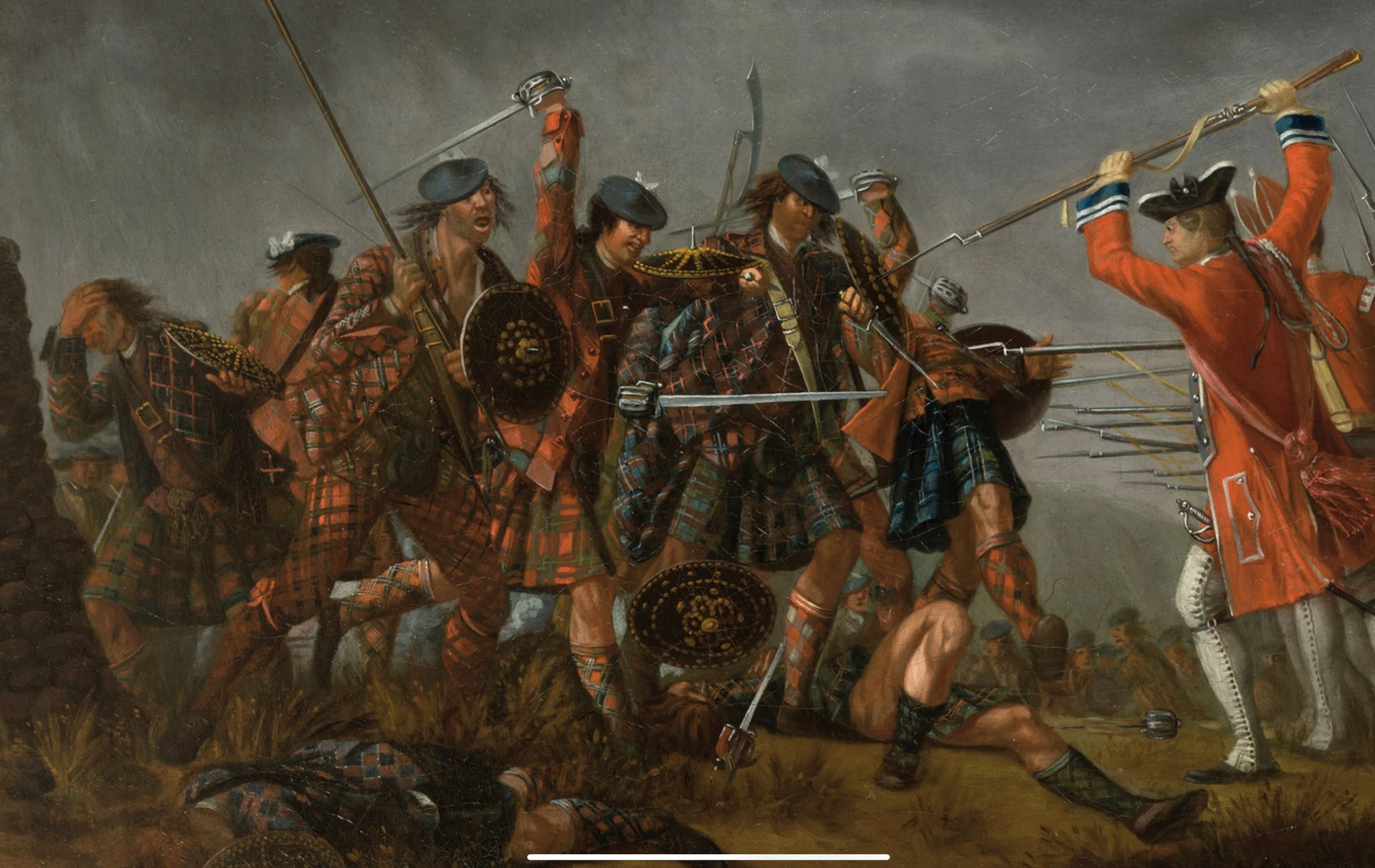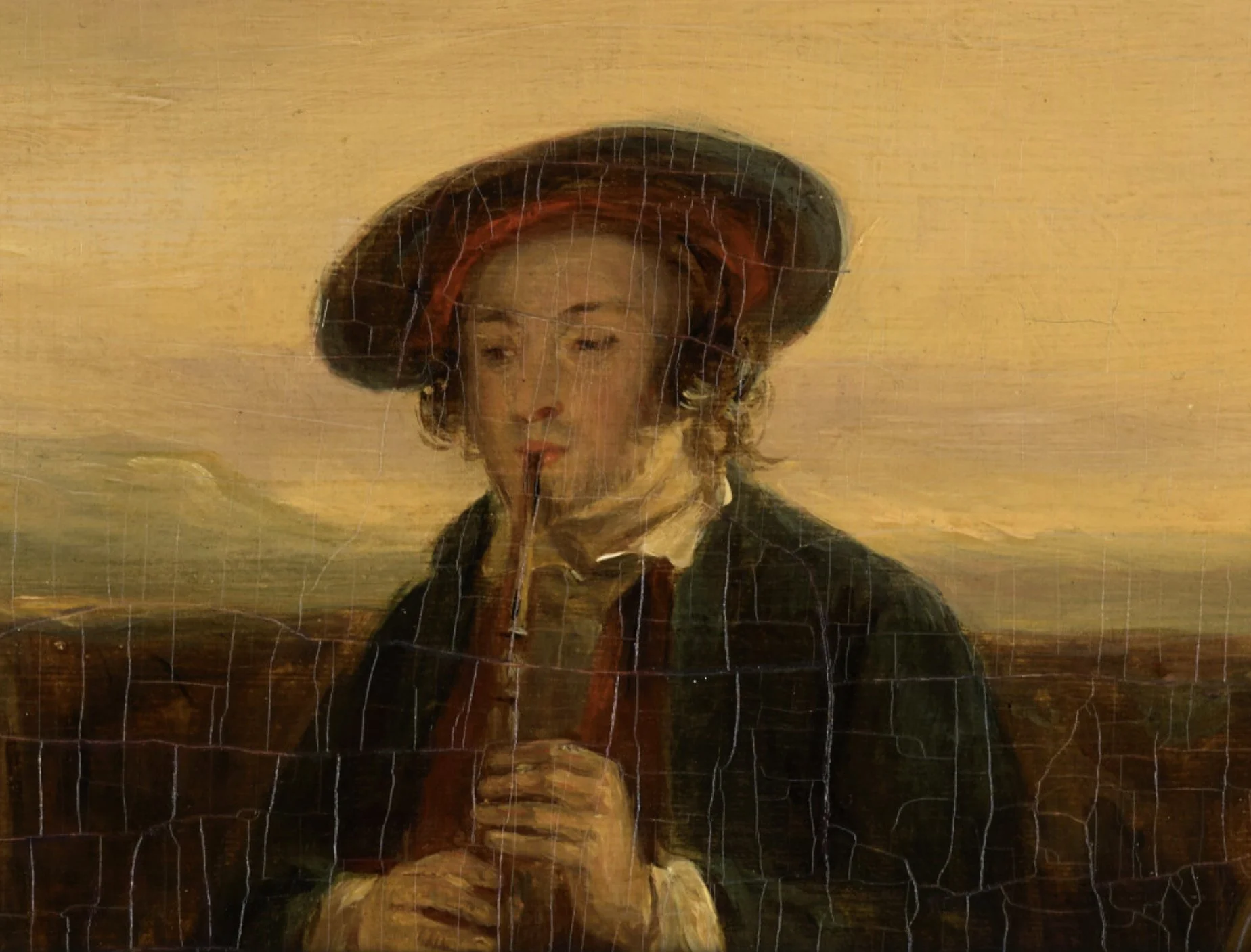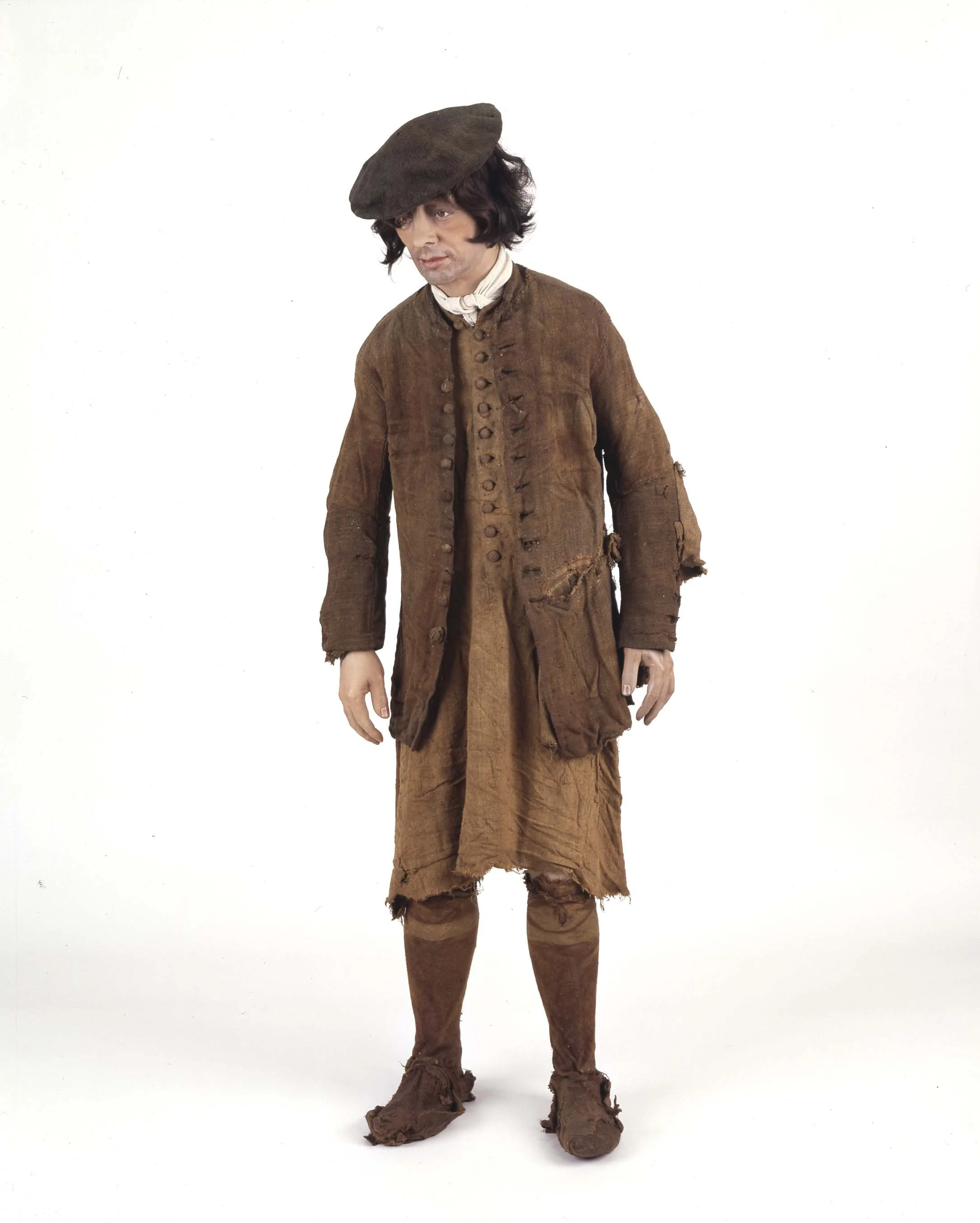18th century Highland male headwear
I have been making historically-accurate Jacobite bonnets -or rather 'as near as possible' historically accurate Jacobite bonnets- for a few years now. Given the fact that the Dunface sheep is extinct and the yarn hasn't been handspun nor hand-dyed with indigo, Jamieson and Smith’s 100% Shetland Jumperweight yarn is a good modern alternative (It is thought that the Dunface was interbred with the native Shetland sheep and modern Shetland sheep do indeed have some Dunface characteristics). I have had several folks getting in touch about the bonnets hence a blog post today on the history of the (blue) bonnet, associated with Jacobitism. Female Highland headwear deserves its own separate post so there is a post on that too on this blog.
Let's start with a few freely-available contemporary images of Highlanders in blue bonnets.
Depictions of bonnets in contemporary art
Here's David Morier's famous painting, An Incident in the Rebellion of 1745, which was commissioned by Cumberland after Culloden. The models Morier used for the painting were apparently serving Hanoverian soldiers (the Redcoats seen below) and imprisoned Jacobite soldiers.
Figure 1: David Morier (1753?), An Incident in the Rebellion of 1745 (accessed from https://www.rct.uk/collection/401243/an-incident-in-the-rebellion-of-1745 on 22 March 2019)
As you can clearly see, all the Jacobite soldiers are depicted as wearing blue bonnets with white cockades along with a variety of tartan jackets, waistcoats and plaids (all the jackets and waistcoats depicted were cut on the bias, which makes perfect sense as it allows more ease of movement, in contrast to surviving garments which have been linked to the battle of Culloden).
I would like to highlight that all bonnets are the same size (you'll see why later on in the post).
Figure 2: Artist Unknown, Lord George Murray (On display at Blair Castle, Perthshire). Image accessed from https://upload.wikimedia.org/wikipedia/commons/9/98/Georgemurray.jpg On 27 September 2023.
Lord George Murray was Prince Charles Edward's main commander. In this painting he is depicted wearing a dark blue bonnet with a cockade. There are also three Highlanders to the right of the portrait (I’m afraid I can’t find a hi-res image of them but if you visit Blair Castle you’ll see them!), also wearing tartan, blue bonnets and white cockades. The bonnets appear to be a similar size, colour and shape to those worn by the Jacobite prisoners in Morier's painting (figure 1). Lord George wore his flat upon his head with the left side standing up to show off his Jacobite cockade. I imagine it would have been pulled flat during inclement weather while on the road and perhaps even pulled forward slightly to act in the same manner a more modern cap does today (to protect the eyes from the weather).
The ninth chapter of John Telfer Dunbar's The Costume of Scotland (1981) is on the subject of the Scottish bonnet. Dunbar starts the chapter by tracing the history of the bonnet and states that the distinction between the smaller Highlander bonnet and the larger and flatter Lowlander bonnet came about in late 16th/early 17th century (Dunbar 1981:155). For a quick visualisation of the difference, compare Lord George’s bonnet in figure 2 with a Lowland bonnet as seen in Ramsay’s The Gentle Shepherd (1786) in figure 3. As you’ll see, the Lowland bonnet was incredibly large.
Figure 3: Detail from David Wilkie, (1786) A scene from Ramsay’s the Gentle Shepherd, accessed from https://www.nationalgalleries.org/art-and-artists/5571/scene-ramsays-gentle-shepherd on 27 September 2023.
Extant examples
Figure 4: Arnish Moor Man. Image accessed from https://images.app.goo.gl/NpGjdUGDyrkW9RtV8 On 27 September 2023
Figure 5: Arnish Moor Man’s bonnet. Image accessed from https://pbs.twimg.com/media/DNeJTeXUIAAZTTy.jpg on 22 March 2019.
In the 1975 edition of the Proceedings of the Society of the Antiquaries of Scotland, Helen Bennett gave a report on the clothing worn by a murder victim from Lewis, which is available to read here. Her description of all the clothing is very detailed; so much so that it would be possible to recreate all items of clothing. This bonnet had a diameter of 30 centimetres (which she correctly writes is 11.8 inches; I usually just round them up to 12”), was knitted in the round on double pointed needles from the headband to the top of the bonnet, which is evidenced by decreases in bonnet made by knitting two stitches together. It was originally dark blue; scientific analysis confirming that it had been dyed with indigo.
Interestingly, the headband was decorated with knots of red wool every two inches; Dunbar argues that bonnets decorated with knots of red wool were the precursors of the diced pattern of the later (Balmoral) bonnets (Dunbar 1981: 136).
Colours
All bonnets mentioned above were blue in colour, but there are other colours which were worn. Martin Martin recorded that: "on their Heads wear Bonnets made of thick Cloth, some blew, some black, and some gray". Martin was writing at the turn of the 18th century from the Western Isles of Scotland and I do question how reliable his work is (he was writing for a London audience and may have embellished some of his accounts - I certainly don’t believe his description of cats being roasted on a spit nor find his description of women’s clothing that believable, but that’s for another blogpost).
The bonnet in the collection of Inverness Museum and Art Gallery, which is similar in size to the Arnish Moor bonnet and which you can see below in figure 6, was originally dark green.
Figure 6: Measuring the bonnet in the collection of Inverness Museum and Art Gallery in 2018. Photo: Jo Watson.
It has a diameter of 12” and was felted from the inside only (you can still visibly see the stitches on both Arnish man and the Inverness bonnets). I believe both were knitted using yarn from a Dunface fleece (certainly an ancient Northern European fleece); it’s not possible to do any scientific analysis on either, but it would make sense as these were the predominant pre-Improvement sheep. Audrey Henshall wrote a fantastic article about early textiles in Scotland which you can find here http://journals.socantscot.org/index.php/psas/article/download/8405/8373
One of the things I’ll be working on for the next wee while is Knitting Henshall . This is a wee project I’ll be doing and then sharing the results with folks on this blog. Basically I am going to recreate the knitted finds she wrote about in the Proceedings of the Antiquaries of Scotland. It’s my tribute to an amazing, trailblazing archaeologist who I sadly never got to meet.
Figure 7: Grant MacGregor in one of my handmade bonnets, Doune, March 2024. Photo: Author








